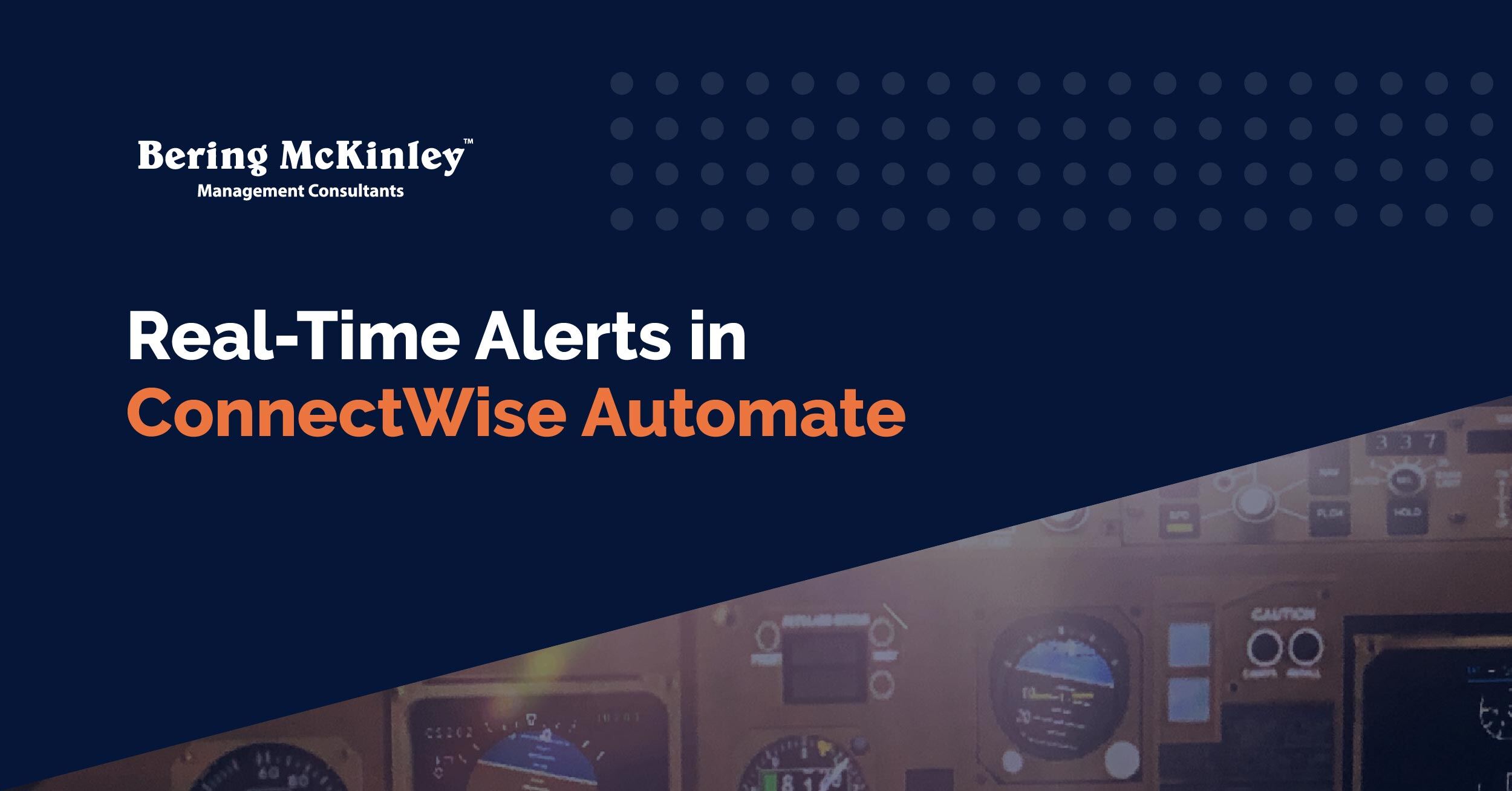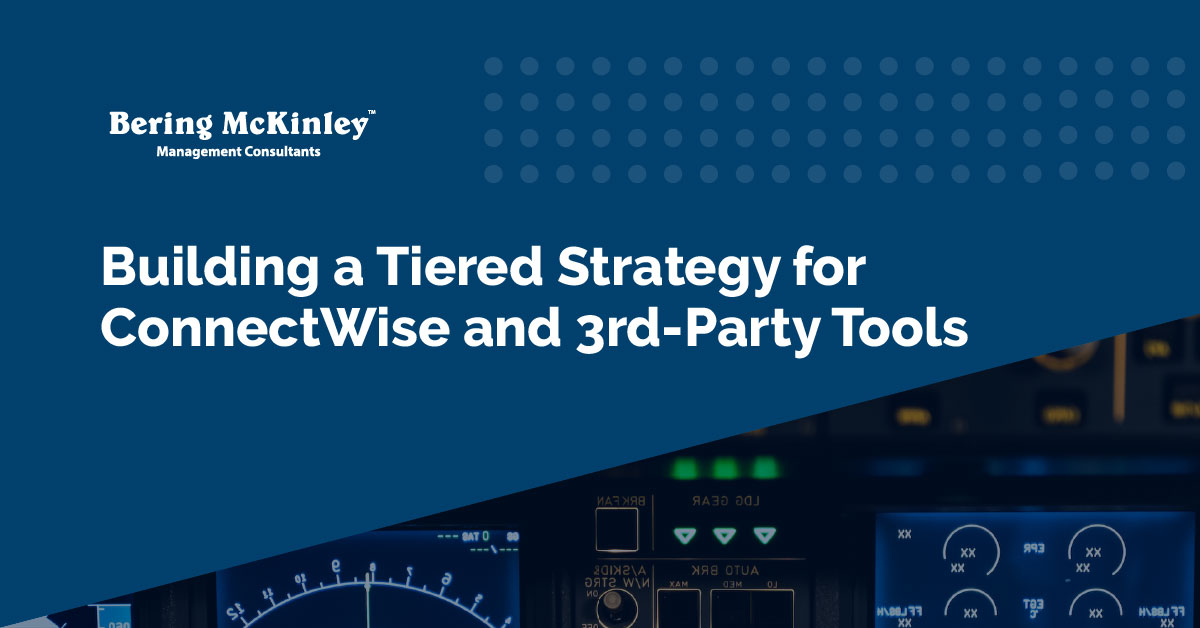The Integration Blueprint: Building a Tiered Strategy for ConnectWise and 3rd-Party Tools
Building out integrations for ConnectWise and third-party tools probably wasn’t part of your MSP dream. But here you are, reading this post, wishing...
3 min read
 Josh Peterson
:
Apr 7, 2025 2:00:00 PM
Josh Peterson
:
Apr 7, 2025 2:00:00 PM

If you work in IT or manage an MSP (Managed Service Provider), you're no stranger to ConnectWise Automate. This powerful tool helps streamline IT service delivery and improve efficacy, all while keeping systems running smoothly. A standout feature of ConnectWise Automate is its real-time alerts, which can be a game changer for IT professionals. But are you using them to their full potential?
This blog highlights why real-time alerts matter, walks you through setting them up, and outlines how to triage them effectively. By the end of this post, you'll understand how to make the most of ConnectWise Automate alerts and how Bering McKinley can help you optimize your MSP operations.
Running an MSP means managing complex systems, multiple clients, and high expectations. Real-time alerts from ConnectWise Automate are like your early warning system, giving you the opportunity to act swiftly before small issues become big headaches. Here's why they’re invaluable to IT professionals and MSPs alike:
Real-time alerts reduce downtime by flagging issues the moment they arise. Whether it’s a server approaching capacity or signs of a security breach, the quicker you know, the faster you can act.
Imagine spotting a client’s issue before they even notice it. Alert-driven responsiveness not only ensures smooth operations but also helps you build trust and demonstrate value.
Gone are the days of monitoring systems manually or reacting to problems only after they’ve escalated. Real-time alerts allow IT professionals to focus their time where it’s most needed, making teams more efficient.
Clients expect their MSP to deliver high-quality service. Having a robust alert system positions you as a proactive provider, giving you an edge over competitors relying on outdated processes.
Getting real-time alerts up and running in ConnectWise Automate doesn’t have to be daunting. Here’s a step-by-step guide to help you configure them effectively.
What metrics or events are mission-critical for your clients’ systems? Prioritize these and set clear objectives for what you want to monitor.
Log in to ConnectWise Automate and head to System > Management > Alert Template Management. This is where you’ll create and customize templates.
Decide when and how you're alerted. For example, you may want to be notified if CPU usage exceeds 80%, if antivirus software becomes outdated, or if a backup fails.
Set up escalation rules to ensure the right issues are sent to the right people. For instance, low-priority alerts can be sent via email, while critical ones trigger a call or SMS.
Once configured, simulate scenarios to ensure alerts are being triggered as expected. Testing will help you fine-tune thresholds and escalation paths.
Real-time alerts are a blessing, but if not handled properly, they can quickly turn into an overwhelming cacophony of noise. Here’s how you can triage alerts effectively for maximum impact.
Start by grouping alerts into levels of urgency. Focus first on those that could cause immediate downtime or data loss. Tools within ConnectWise Automate allow you to assign severity levels to ensure critical alerts stand out.
For each type of alert, have a clearly defined response process. Who handles critical alerts? What steps should be taken for resolution? Use workflows to keep everyone on the same page.
Automate responses to lower-priority alerts where possible. For instance, if a system requires a reboot to fix a performance issue, set an automatic script to resolve it vs. involving your team.
Don’t just fix alerts and move on. Look for patterns over time to identify recurring issues or gaps within a client’s setup. Fixing root causes can drastically reduce alert volumes.
An effective triaging process requires ongoing refinement. Review which alerts didn’t add value and adjust thresholds or escalation rules to minimize disruptions.
Looking to optimize ConnectWise Automate or streamline your MSP operations? That’s where Bering McKinley (BMK) comes in.
We specialize in tools like ConnectWise Automate. BMK experts can help you set up and optimize real-time alerts tailored to your unique needs.
Our proven sales strategies can help your MSP achieve measurable growth and improve your bottom line.
From management to finance consulting, BMK provides solutions to tackle challenges at every stage of your MSP business.
When used effectively, real-time alerts in ConnectWise Automate can elevate your MSP operations to new heights. By catching problems early and addressing them efficiently, you’ll save time, boost client satisfaction, and drive lasting growth.
But you don’t have to do it alone. Partner with Bering McKinley to unlock the full potential of your tools, processes, and teams. Connect with our consultants and see what’s possible for your MSP business.

Building out integrations for ConnectWise and third-party tools probably wasn’t part of your MSP dream. But here you are, reading this post, wishing...

ConnectWise Sidekick isn’t just another shiny tool for managed service providers. It’s a digital assistant designed for real people on the frontline...

Trying to get ConnectWise to finally work with you instead of against you? You’re not alone. For many MSPs, it’s the digital equivalent of a Swiss...